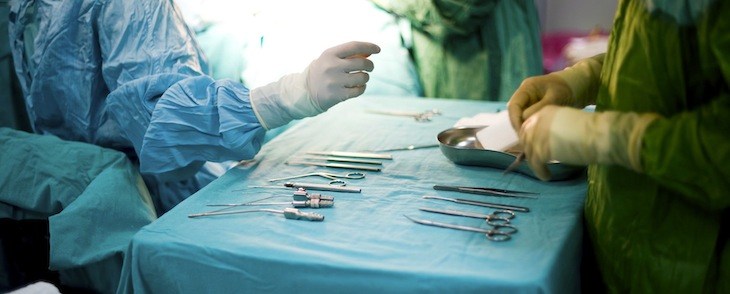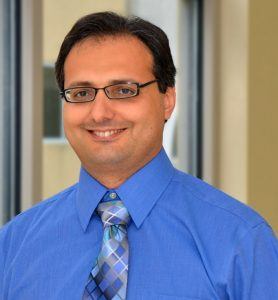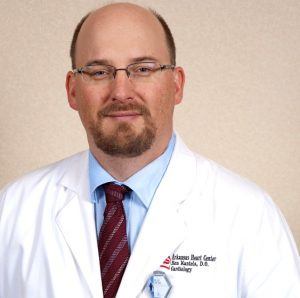Doctors bring unique heart procedure to the Fort Smith region
by April 25, 2017 3:32 pm 1,354 views

A two-physician heart procedure has been successfully administered at Fort Smith-based Sparks Health System. Dr. German Kamalov of the Cardiology Center at Sparks and Dr. Ronald Kantola of the independent Arkansas Heart Center, recently teamed up for a procedure that is not common in the United States.
Kamalov, a cardiac electrophysiologist, studied the rare approach to cardiac resynchronization therapy (CRT) for a biventricular defibrillator, but had not performed it, according to a Sparks Health System statement on the procedure.
A defibrillator is an electrical device that provides a shock to the heart when there is a life-threatening arrhythmia present. CRT is used to treat the delay in heart ventricle contractions that occur in some people whose hearts pump at a slower, weaker rate.
The therapy involves implanting an electronic, battery-powered device under the skin. The device has two or three leads – wires that send impulses – that are positioned in the heart to help the organ beat in a more balanced way. In this case, the patient was not a candidate for the traditional implantation of a left ventricular lead or cardiac surgery.
The surgery required a two-physician team, with one doctor gaining access to the left side of the heart from the groin and the other doctor simultaneously working from the chest where the original defibrillator was inserted.
With a month of planning and a small stack of studies with which to refer, Kamalov and Kantola successfully implanted the wire to the left ventricle of the heart to resynchronize the patient’s heart rhythm.
“It was a challenge, but we were able to combine our experiences to provide a solution for this patient,” Kamalov said.

Kamalov joined Sparks in October of 2014 as the area’s only cardiac electrophysiologist and since then has performed many procedures to treat and correct heart rhythm irregularities that were not previously available in Fort Smith. Kantola has practiced cardiology in the Fort Smith area for more than 11 years and is a member of the Arkansas Heart Center.
Because of what Sparks says is a rare procedure, the physicians were able to reduce the patient’s symptoms of heart failure, as well as avoid an invasive heart surgery. Specific benefits to the patient include improved exercise tolerance, reduced remodeling (reduction in left ventricle chamber size and measures of mitral regurgitation), and reduced mortality.
As far as aftermath and future maintenance for general CRT procedures related to devices is concerned, a 2011 study based in Italy found device-related events in patients receiving defibrillators for CRT to be rare. The study analyzed data from 3,253 patients, who underwent “de novo successful implantation of CRT-D and were followed up for a median of 18 months.”

Device-related events were reported in 416 patients, or about 12.79%. Surgical interventions were prescribed in 390 of the cases, or 11.99%. Four years after the implantation procedure, 50% of patients underwent surgical revision for battery depletion and 14% for unanticipated events. For comparison, at four years, battery depletion occurred in 10% and 13% of patients who received single- and dual-chamber defibrillators at the study centers, and unanticipated events were reported as 4% and 9%, respectively.
“In current clinical practice device-related events are more frequent in CRT-D than in single- or dual-chamber defibrillators, and are frequently managed by surgical intervention for system revision. However, a worse clinical outcome is not associated with these events,” the study’s authors noted.
